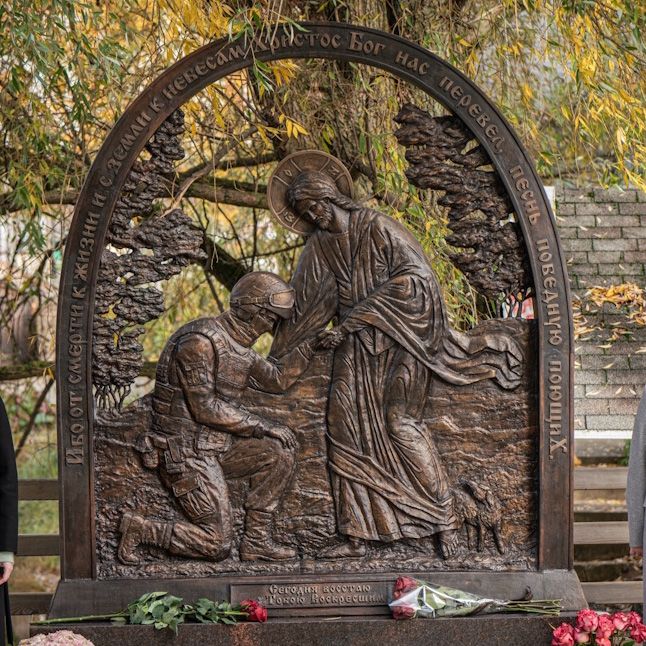Death in War for Empire as a “Path to Christ”

Sergei Chapnin
A Blog of the Orthodox Christian Studies Center of Fordham University
On Sunday, October 12th, on the grounds of St. George’s Church in Nakhabino, near Moscow, a monument to “fallen warriors” was solemnly unveiled and—who could doubt it!—blessed and sprinkled with holy water. In the diocesan bishop’s social media, the monument is called a “symbol of the spiritual connection between generations.” As is customary, representatives of both ecclesiastical and civil authorities were present, along with parishioners and Orthodox scouts. The official narrative calls for honoring “defenders of the Fatherland,” while in the emotional responses of parishioners another motif emerges: the monument as consolation for those whose loved ones are missing in action, providing a place where one can “come, pray, and weep for a dear one.” As Christians, we can understand why grieving families seek consolation in memorials that incorporate religious imagery and symbols of faith. This makes it even more tragic when the state and the “official church” exploit this authentic human need, transforming sacred spaces of mourning into instruments of war propaganda and ideological mobilization.
Archbishop Foma (Mosolov) of Odintsovo and Krasnogorsk came to Nakhabino to personally lead the “celebrations.” The brief official report particularly notes that he “offered a special prayer for Holy Rus'”—a phrase that, soon after the beginning of Russian aggression, became a ritual element in any message needing to demonstrate ideological loyalty to Patriarch Kirill and the Putin regime. Archbishop Foma demonstrates that both he and the clergy of his diocese do this with ease and without hesitation.
